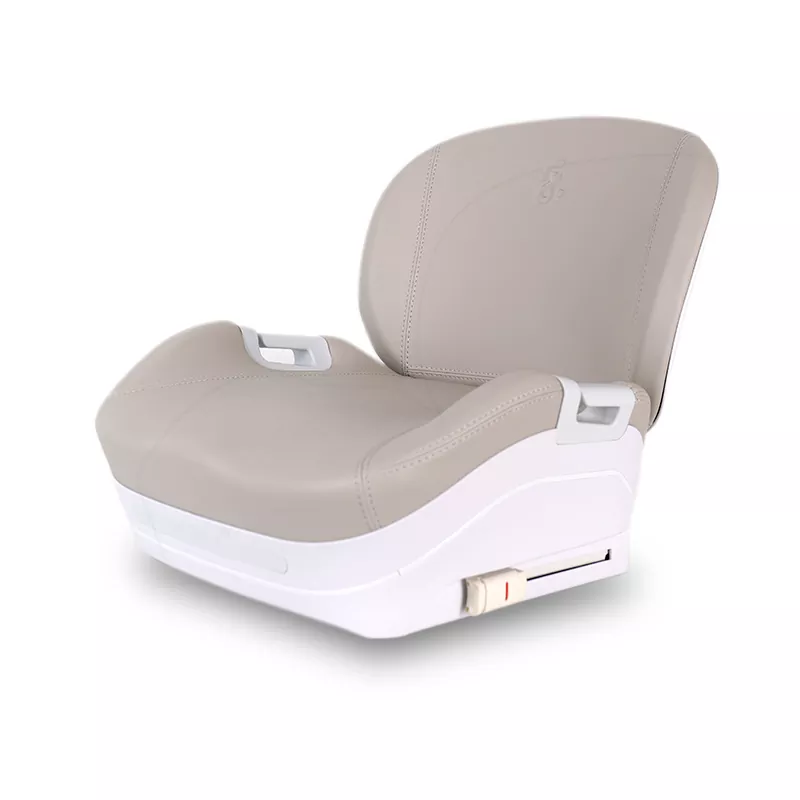From the simple seats of the Ford Model T era to today’s intelligent protection systems, child safety seats have undergone 90 years of evolution, transforming from a "portable tool" to a "life-protecting barrier." Their development has always centered on the core of "safety upgrades, standard improvement, and experience optimization." Each technological breakthrough has significantly reduced the risk of child casualties in car rides, making them an indispensable piece of equipment for family travel.

This stage focused on "building the prototype of protection," addressing the pain point of children riding without protection:
In 1964, Volvo collaborated with universities to develop the first rear-facing seat prototype, inspired by astronaut seats. Crash tests verified that the rear-facing design could disperse impact forces; Volvo launched the first mass-produced seat in 1972 and pioneered booster cushions in 1978 to meet the needs of older children.
Early seats used resin frames and soft cushioning. Although they only reduced displacement through basic fixation, they already lowered the crash casualty rate for children aged 0–3 by 30%, marking a qualitative leap compared to the unprotected state.
Laws, regulations, and standards became the core driving force for development, solving the problems of "product chaos and insufficient protection":
In 1981, Europe introduced the first restraint system standard ECE R44, and Britax became one of the first brands to obtain certification; in 1985, the United States incorporated child safety seats into mandatory laws, promoting the popularization of five-point harnesses.
In the 1990s, the ISOFIX connector was developed jointly by Britax and Volkswagen. It raised installation accuracy from 30% to 96%. Its patent was given up, and it became a global standard. Volvo launched an integrated foldable booster cushion. It makes the seat and the vehicle’s protection system work together.
The focus turned to "precise protection and local adaptation". Safety performance got better in all ways:In 2000, Volvo launched the first ISOFIX rear-facing seat. In 2007, it made a two-stage adjustable booster cushion. It fits children’s growing needs. Britax developed Pivot Link shock absorption tech. It lowers the risk of head and neck moving too much.China put the national standard GB 27887 into use in 2012. It started mandatory 3C certification in 2015. In 2013, Shanghai was the first to make a law. It said children under 4 must use child seats. The use rate at home went up step by step.
Intelligence and good performance have become new goals. They make "active protection + easy use" possible:Brands like Mercedes-Benz have put cameras and sensors together. They watch children’s status in real time and send data to parents’ phones. Goodbaby used GBES aerospace energy-absorbing tech. In 80km/h high-speed crash tests, the chest acceleration still met more than the standard needs.Features like dynamic side protection and 90° rotating installation are now common. EPP eco-friendly cushioning materials have taken the place of traditional foam. They make protection 30% better and also improve comfort.
| Development Stage | Core Characteristics | Key Breakthroughs | Safety Efficacy Improvement |
|---|---|---|---|
| Early Stage | Building protection prototypes | Rear-facing design, booster cushions | 30% reduction in casualty rate |
| Standardization Stage | Establishing laws and standards | ECE R44, ISOFIX connectors | Installation accuracy reached 96% |
| Upgrade Stage | Precision protection & localization | Shock absorption tech, GB standard, 3C certification | 71% reduction in mortality rate for children aged 0–3 |
| Intelligent Stage | Tech empowerment & experience optimization | Intelligent monitoring, high-speed energy-absorbing tech | Compliance with standards even in 80km/h crashes |
Today, child safety seats have formed a complete system of "passive protection + active early warning." Europe’s ECE R129 (i-Size) standard has mandated rear-facing seating for up to 15 months, further enhancing safety guarantees for infants and young children. With the in-depth integration of intelligence and eco-friendly materials, child safety seats will continue to raise the bar for child car safety.

